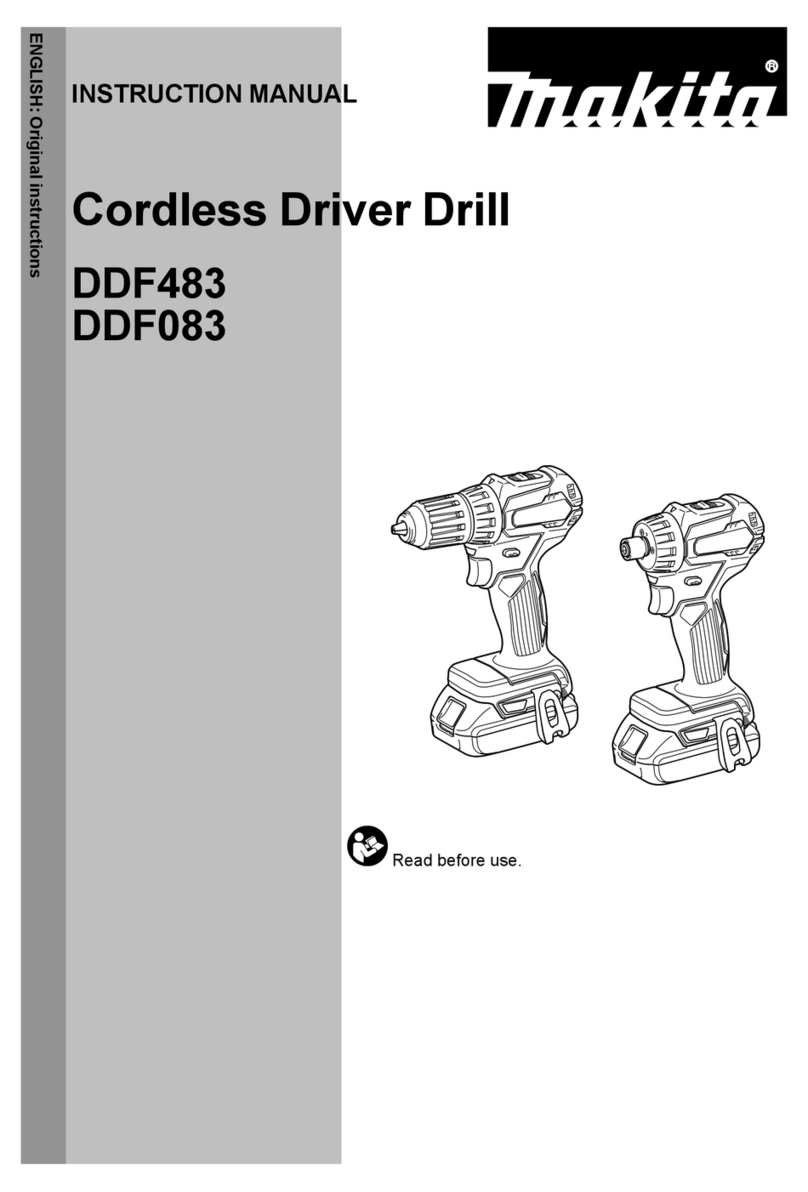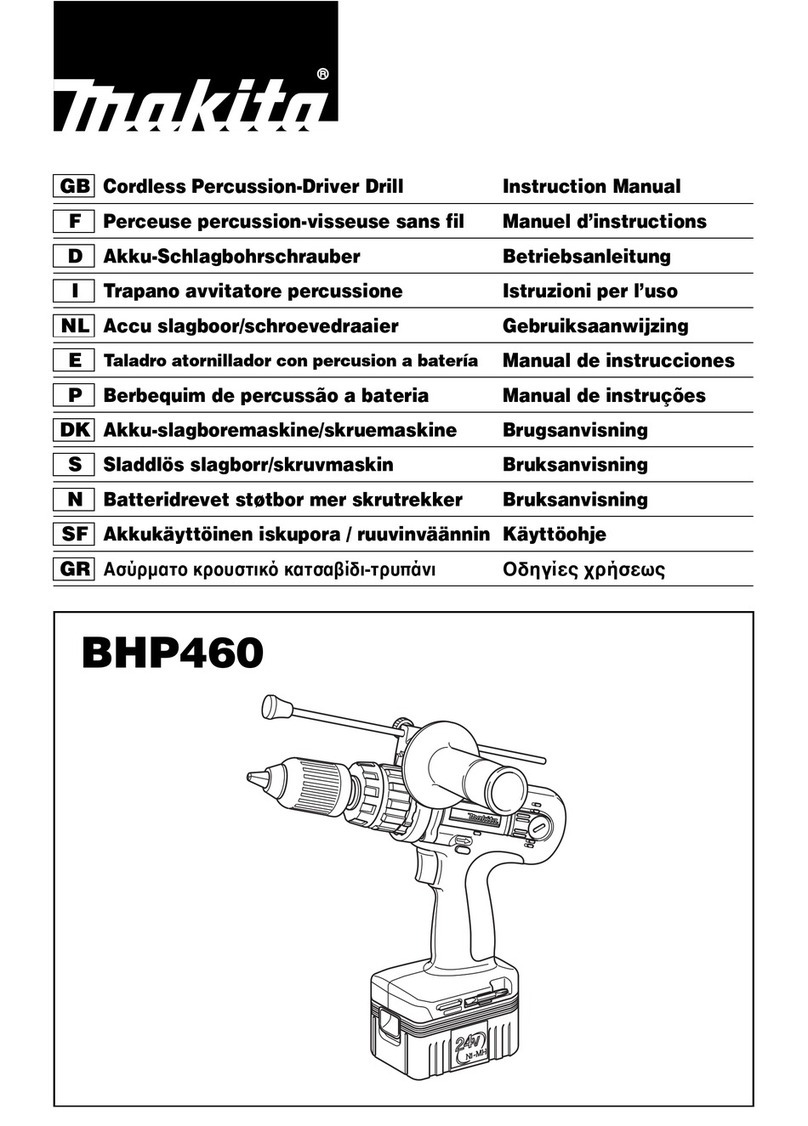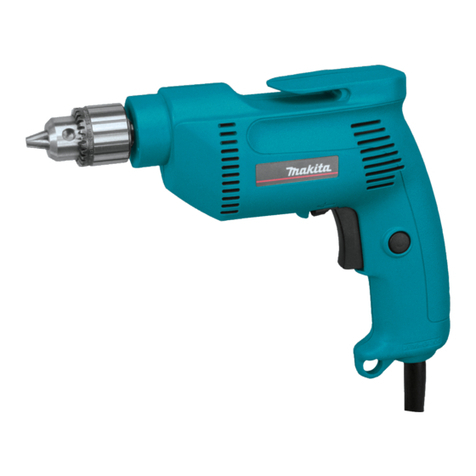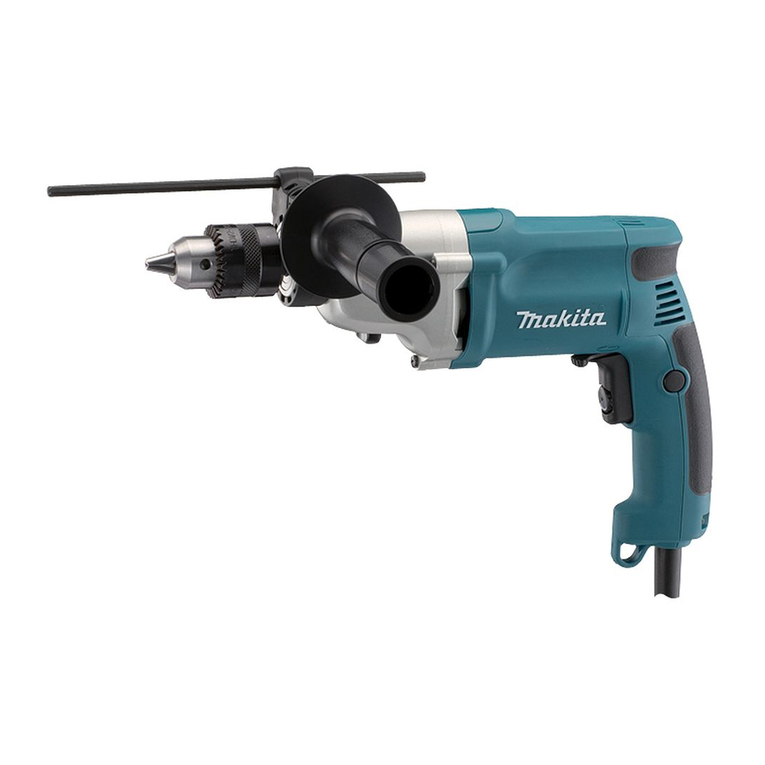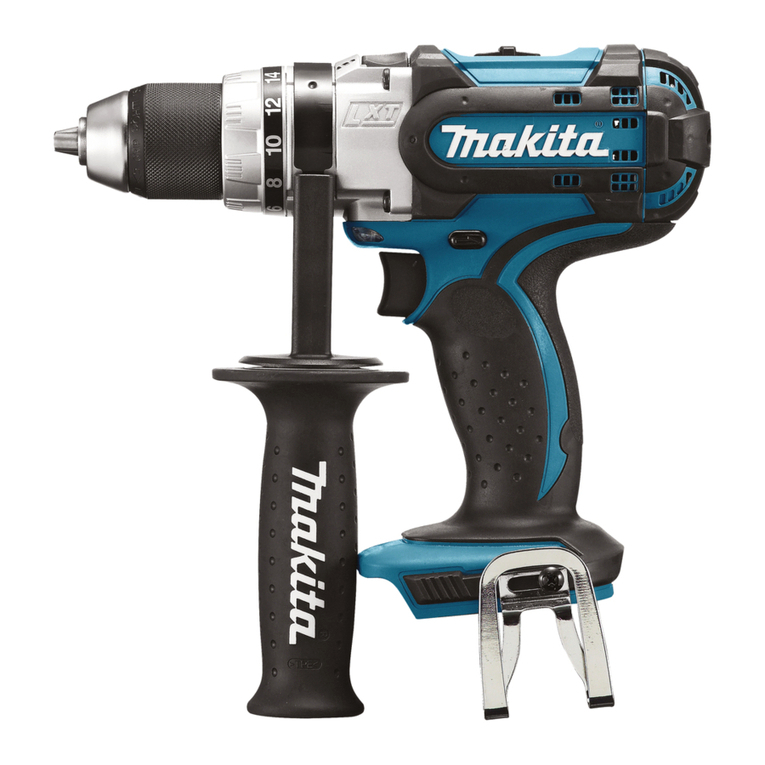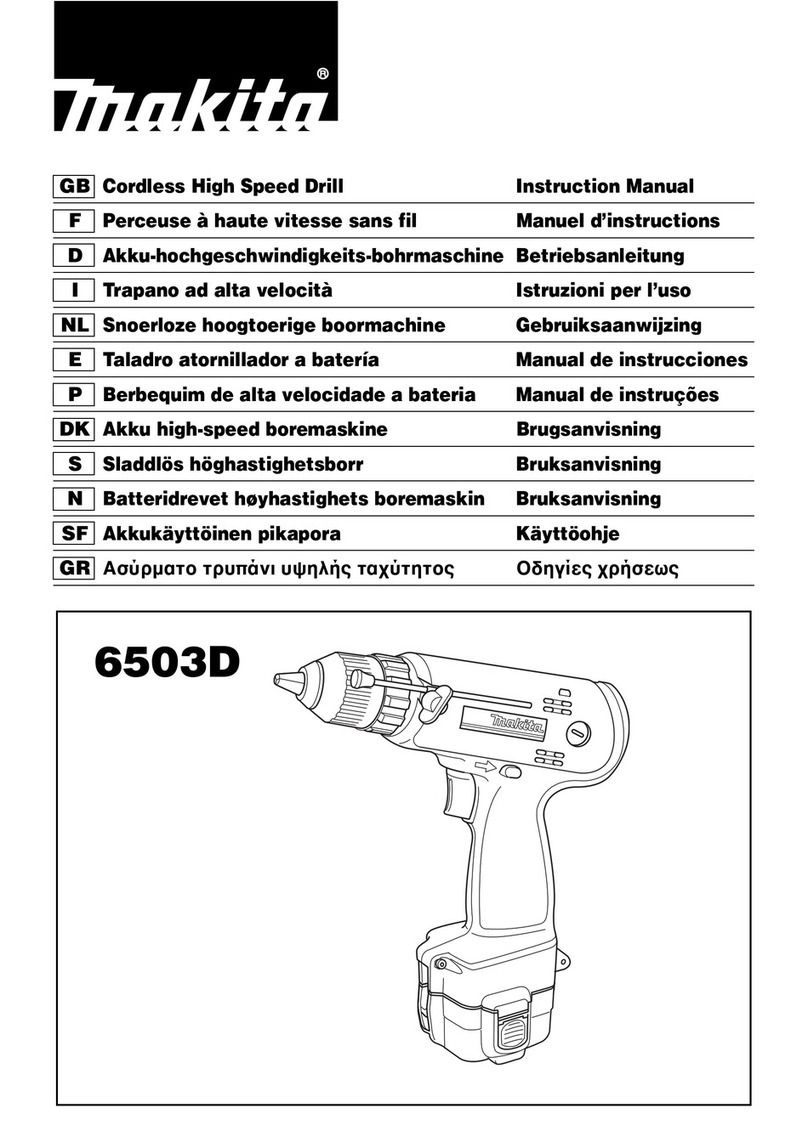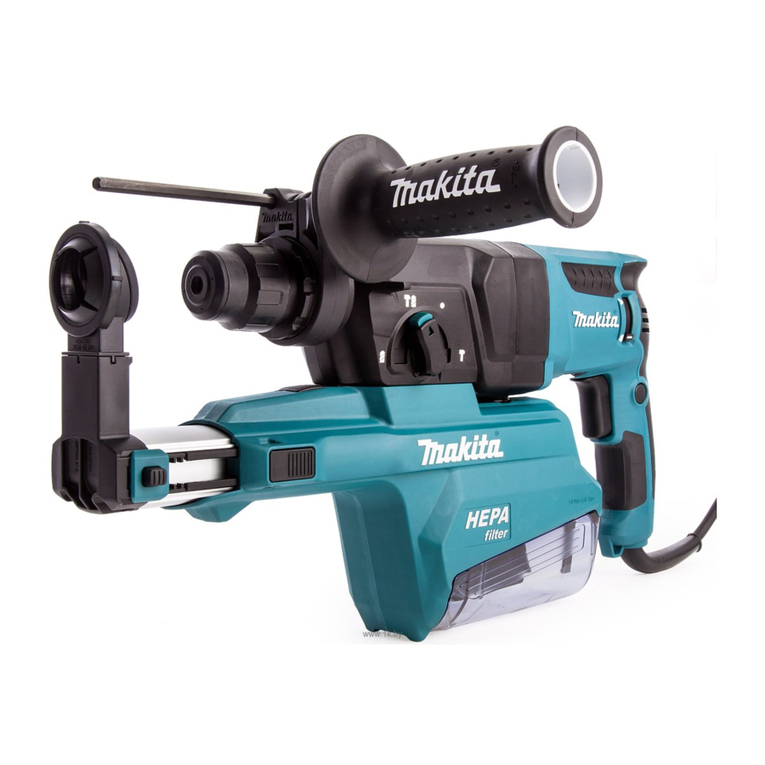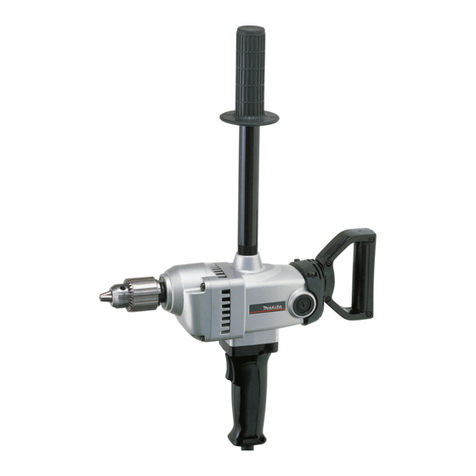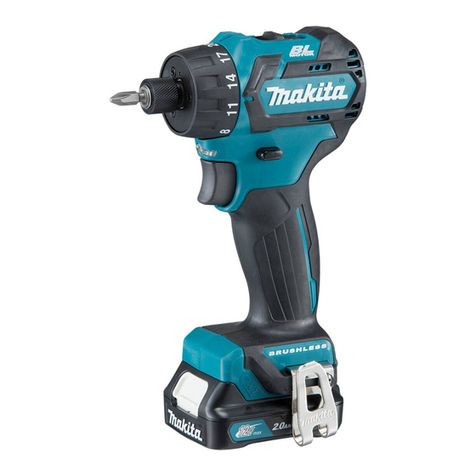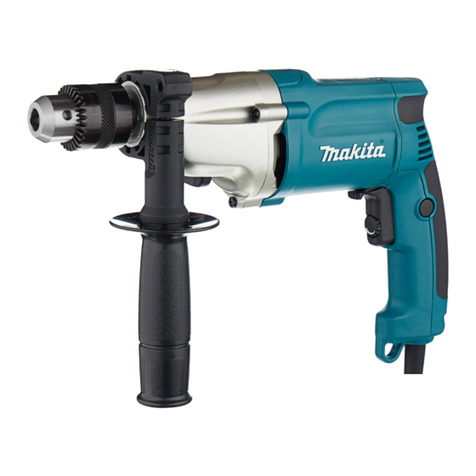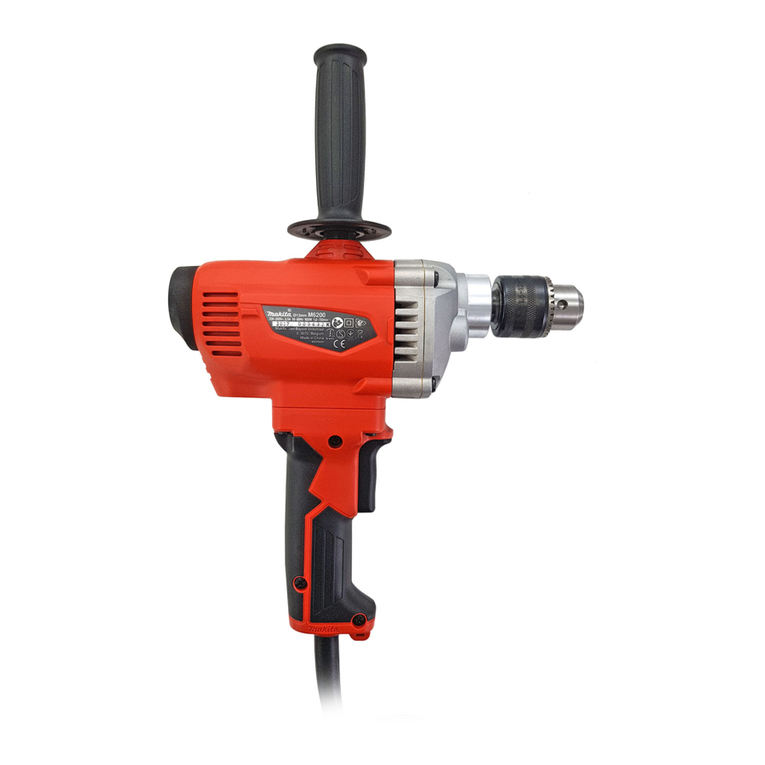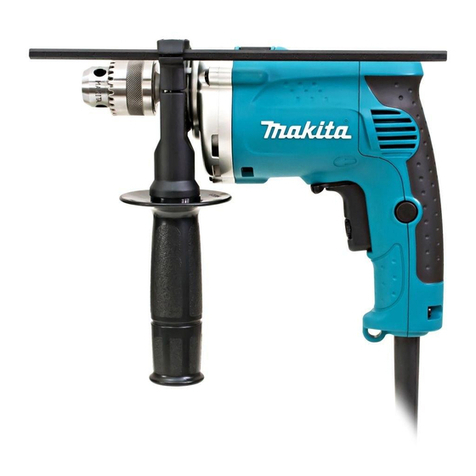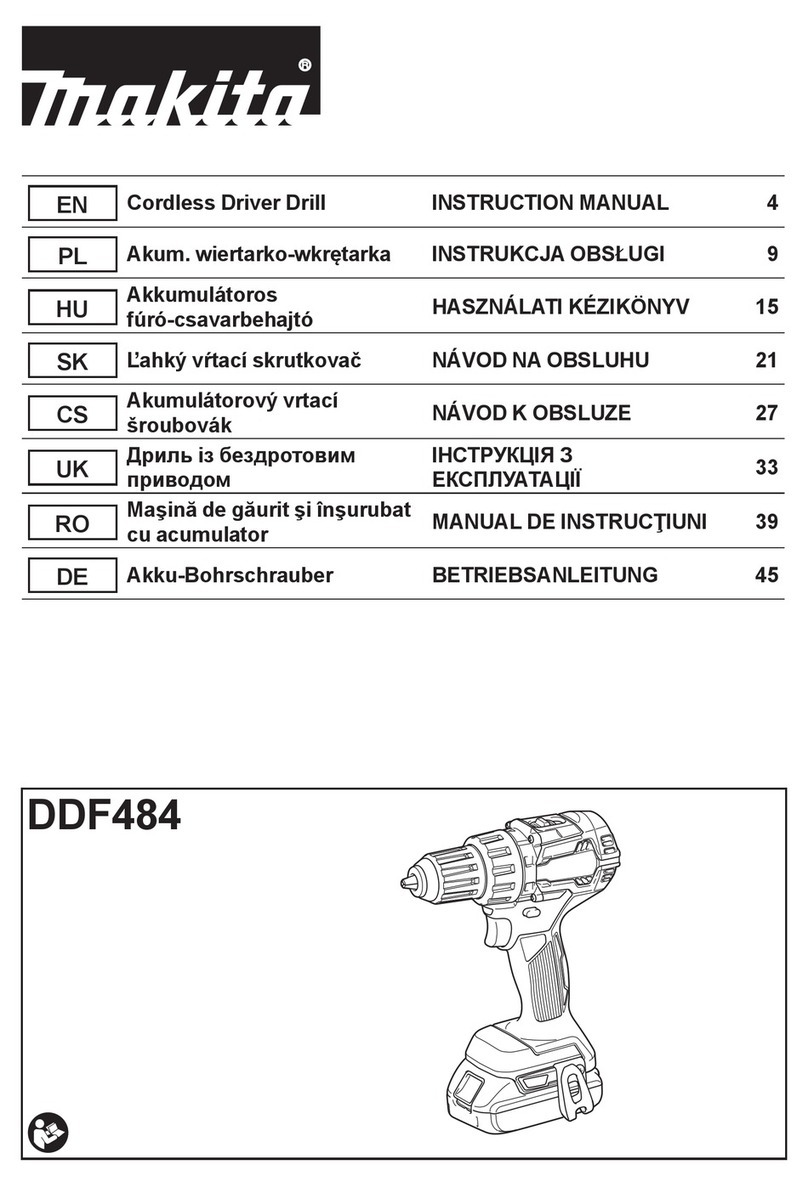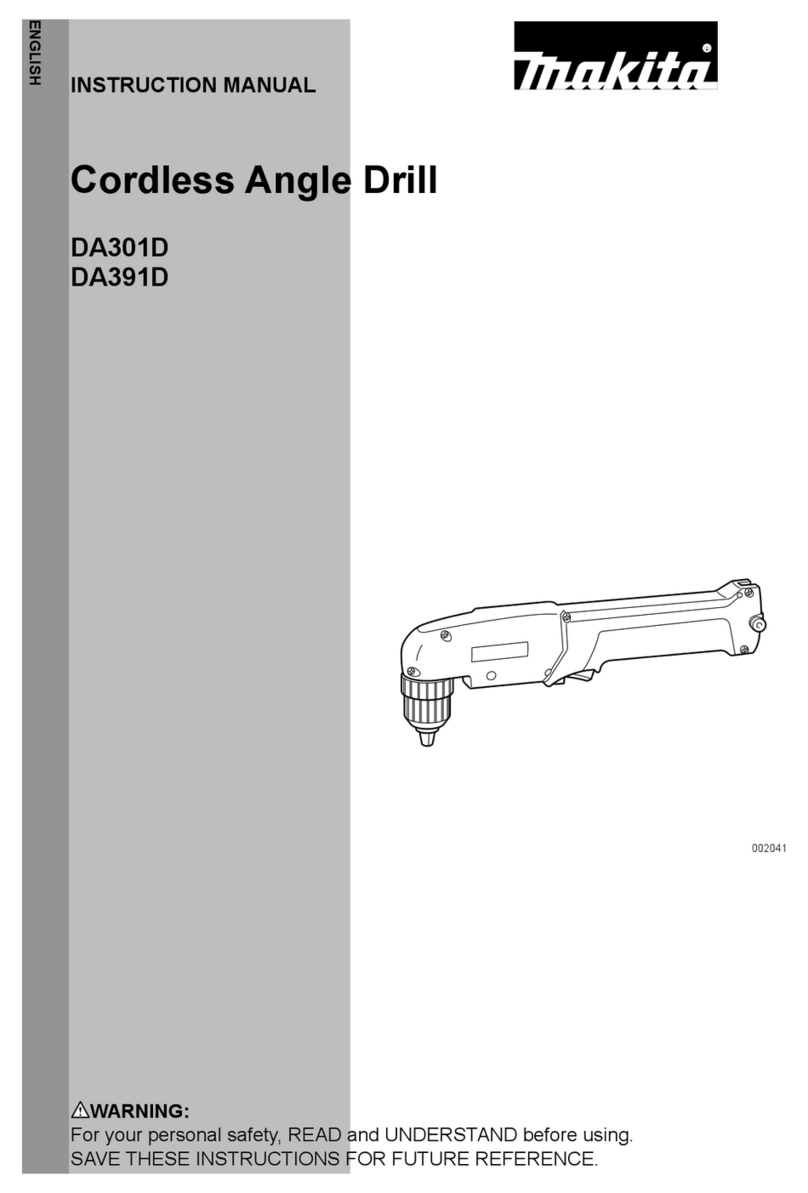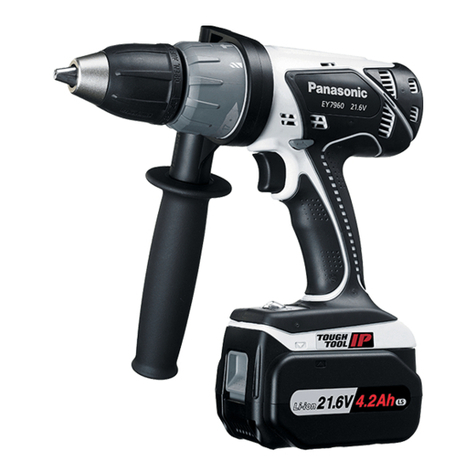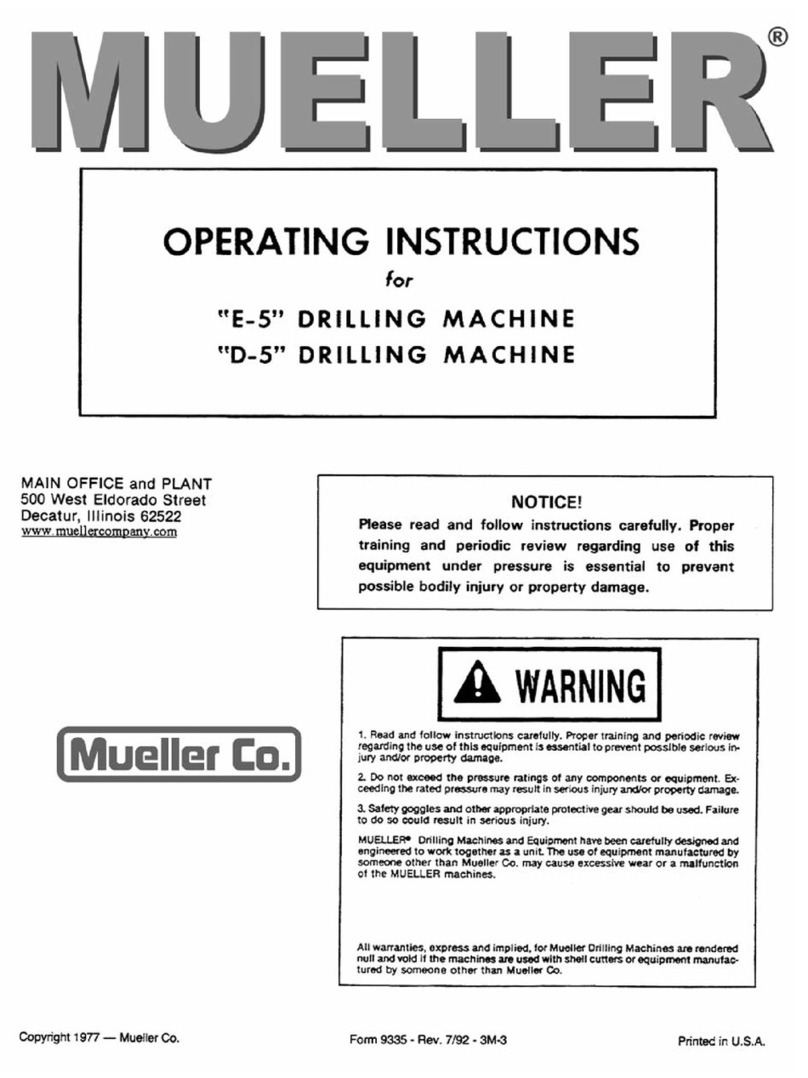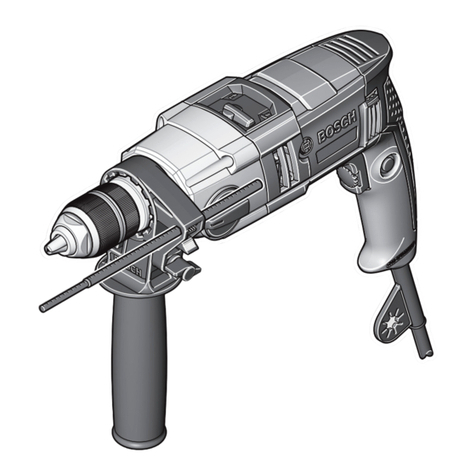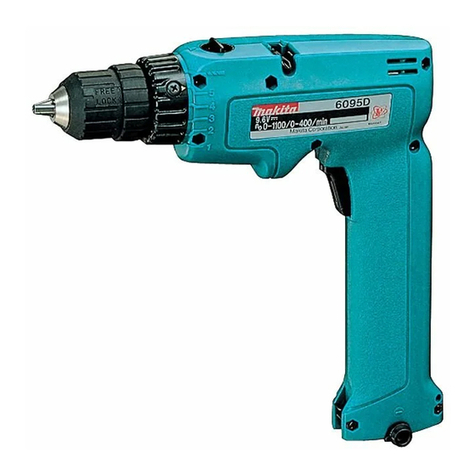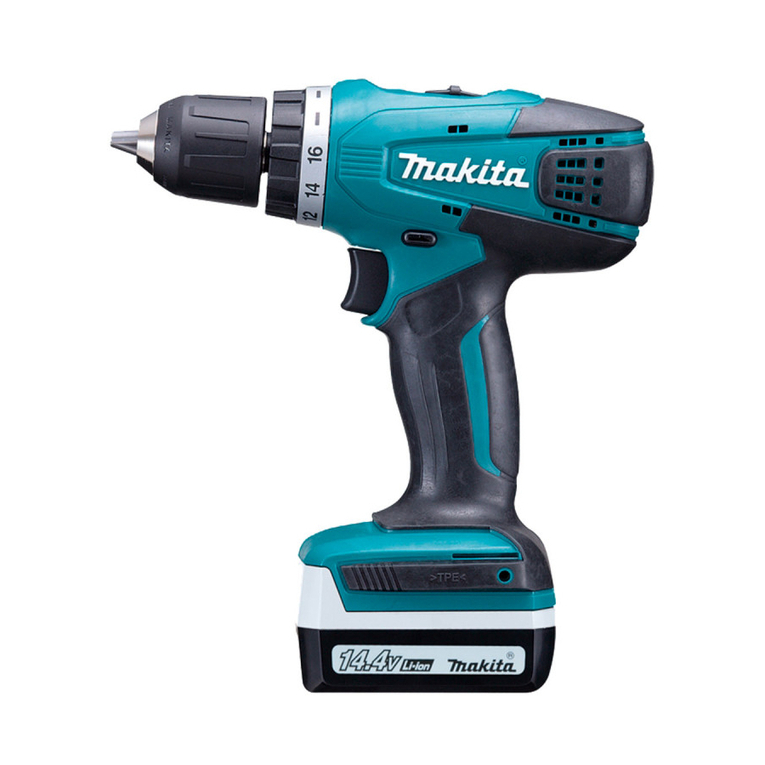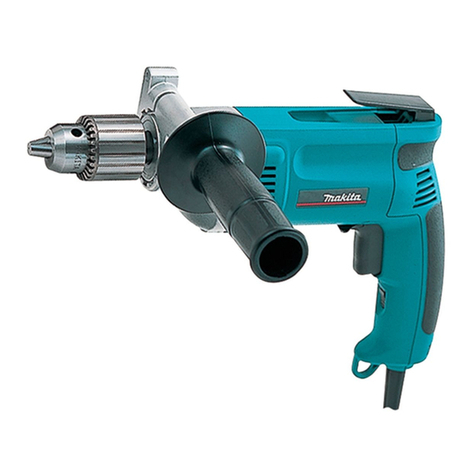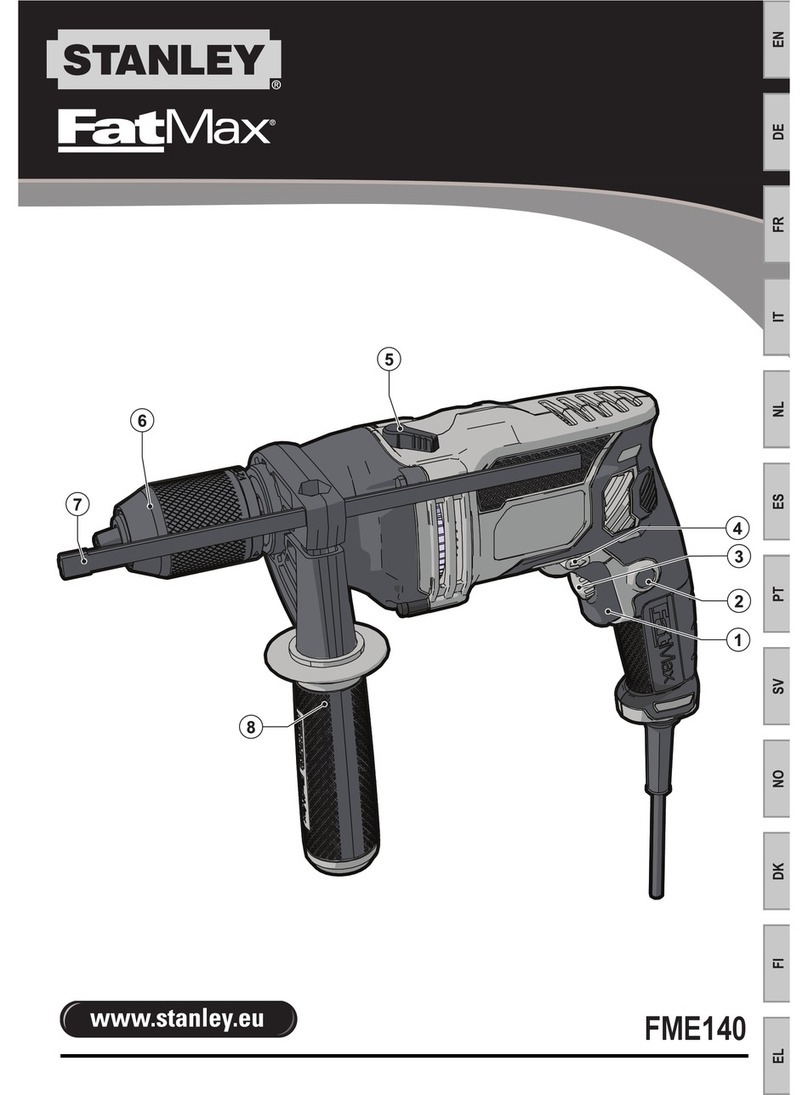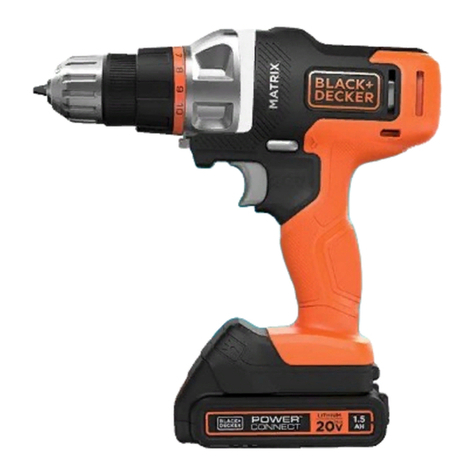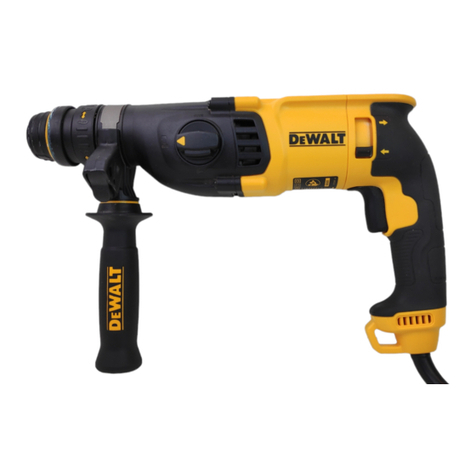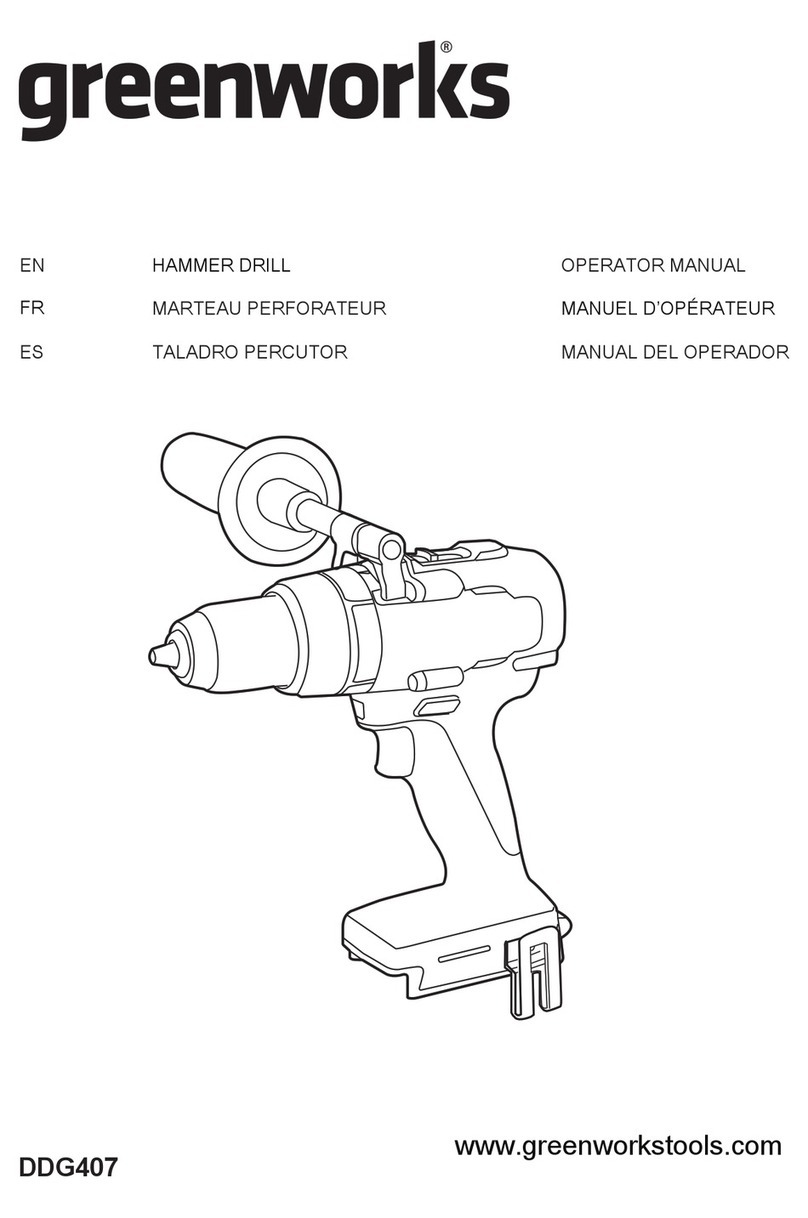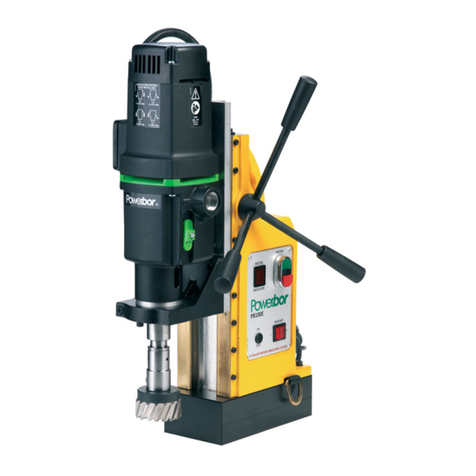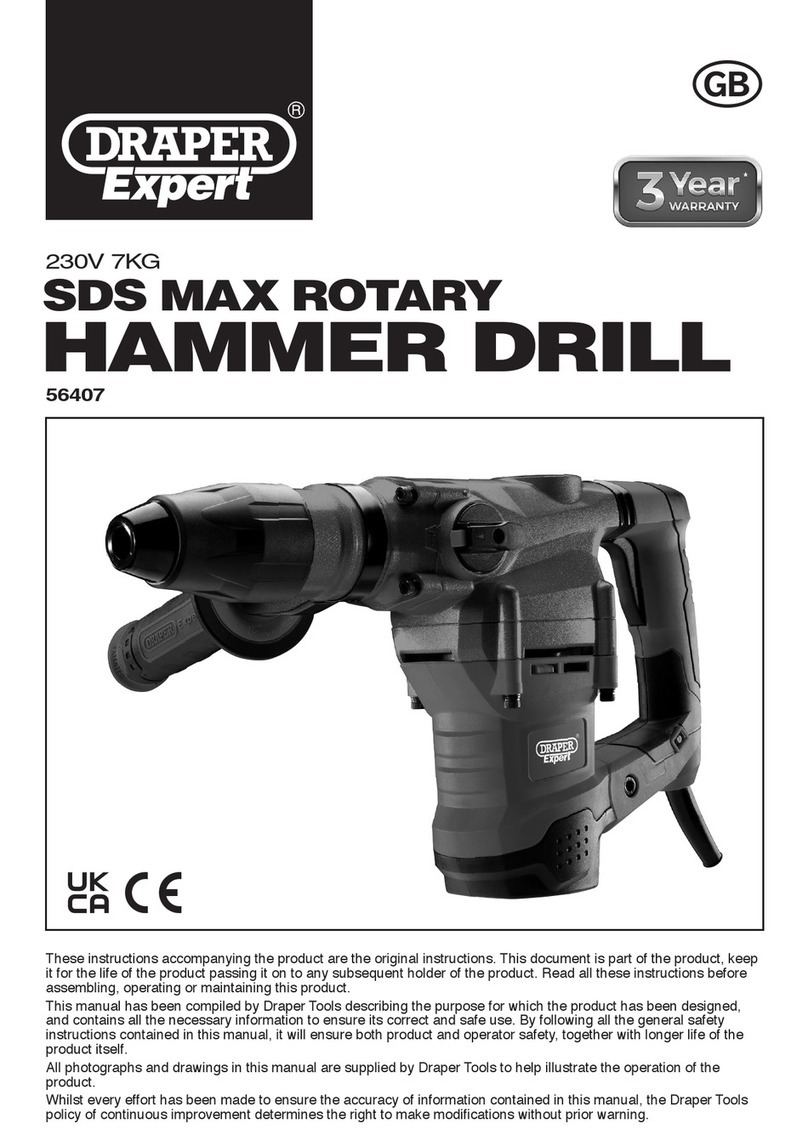Important safety instructions for
battery cartridge
1. Before using battery cartridge, read all
instructions and cautionary markings on (1)
battery charger, (2) battery, and (3) product
using battery.
2. Do not disassemble battery cartridge.
3. If operating time has become excessively
shorter, stop operating immediately. It may
result in a risk of overheating, possible burns
and even an explosion.
4. If electrolyte gets into your eyes, rinse them
out with clear water and seek medical
attention right away. It may result in loss of
your eyesight.
5. Do not short the battery cartridge:
(1) Do not touch the terminals with any
conductive material.
(2) Avoid storing battery cartridge in a
container with other metal objects such
as nails, coins, etc.
(3) Do not expose battery cartridge to water
or rain.
A battery short can cause a large current flow,
overheating, possible burns and even a
breakdown.
6. Do not store the tool and battery cartridge in
locations where the temperature may reach or
exceed 50 °C (122 °F).
7. Do not incinerate the battery cartridge even if
it is severely damaged or is completely worn
out. The battery cartridge can explode in a
fire.
8. Be careful not to drop or strike battery.
9. Do not use a damaged battery.
10. The contained lithium-ion batteries are
subject to the Dangerous Goods Legislation
requirements. For commercial
transports e.g. by third
parties, forwarding agents, special
requirement on packaging and labeling
must be observed. For
preparationof the item
being shipped, consulting an expert
for hazardous material is required. Please
also observe possibly more
detailed national regulations.
Tape or mask off open contacts and pack up the
battery in such a
manner that it cannot
move around in the packaging.
11. Follow your local regulations relating to
disposal of battery.
12. Use the batteries only with the products
specified by Makita. Installing the
batteries to non-compliant
products may result in
a fire, excessive heat,
explosion, or leak of
electrolyte.
SAVE THESE INSTRUCTIONS.
Tips for maintaining maximum
battery life
1. Charge the battery cartridge before
completely discharged. Always stop tool
operation and charge the battery cartridge
when you notice less tool power.
2. Never recharge a fully charged battery
cartridge. Overcharging shortens the battery
service life.
3. Charge the battery cartridge with room
temperature at 10 °C - 40 °C (50 °F - 104 °F).
Let a hot battery cartridge cool down before
charging it.
FUNCTIONAL
DESCRIPTION
